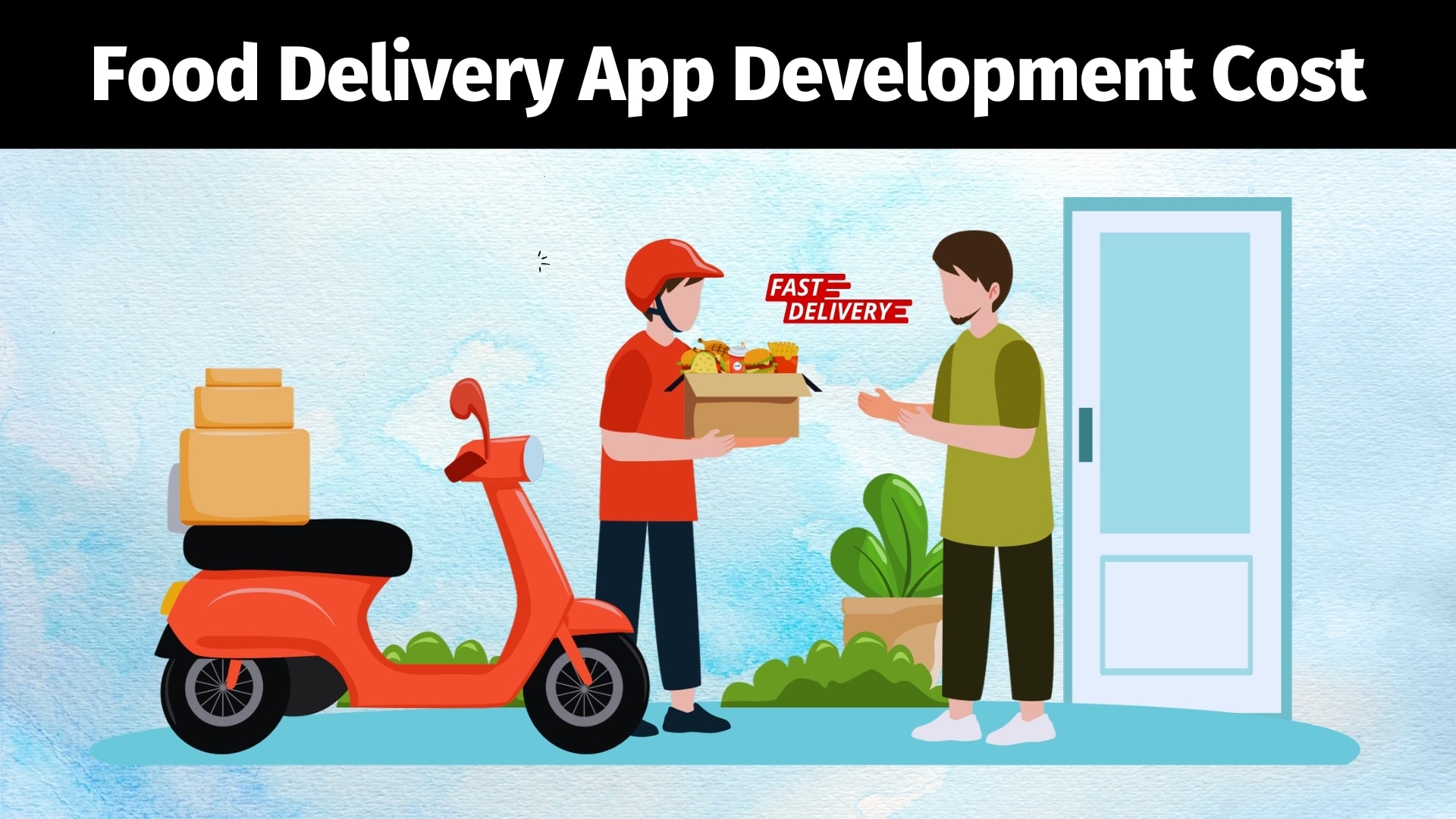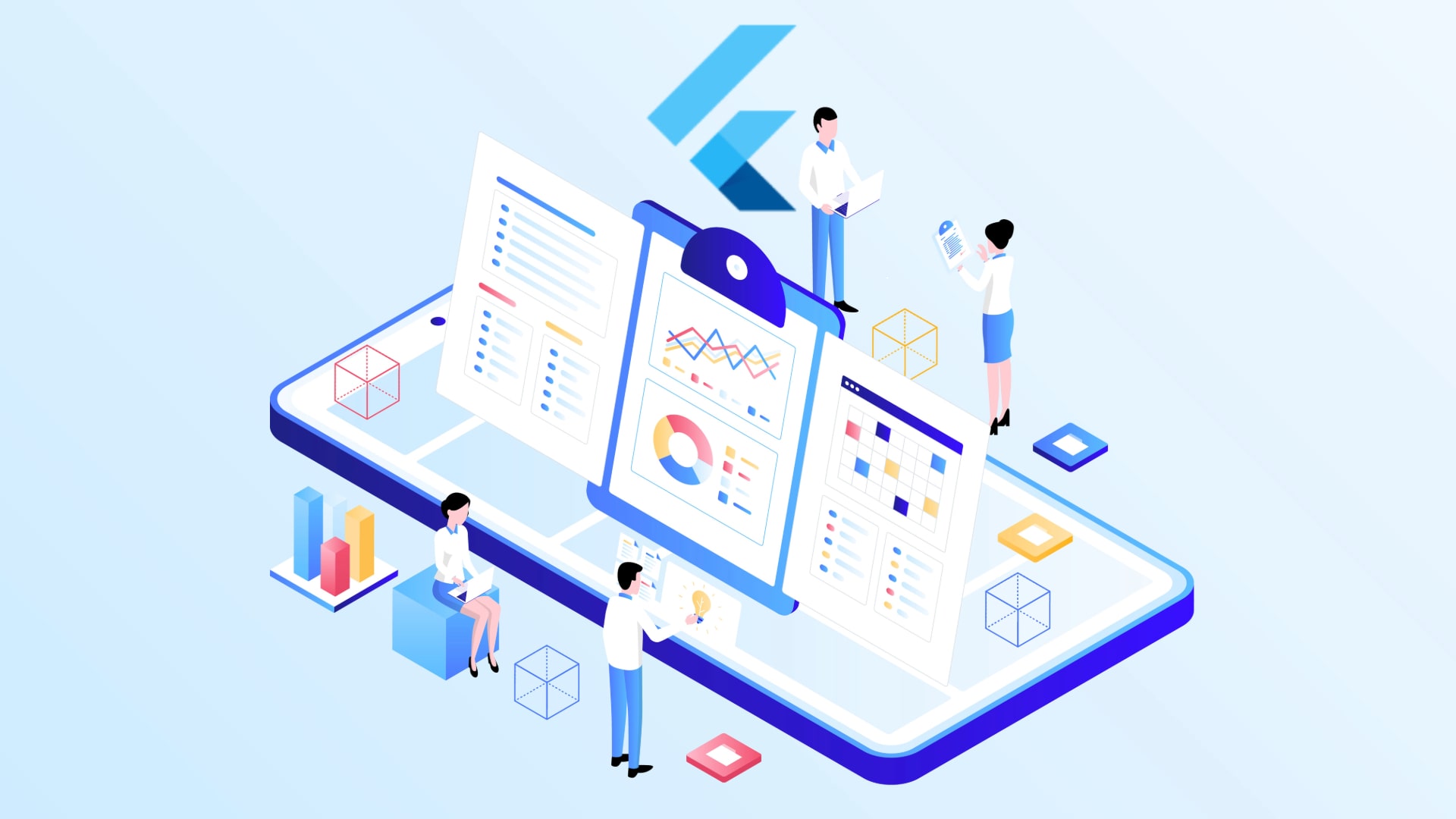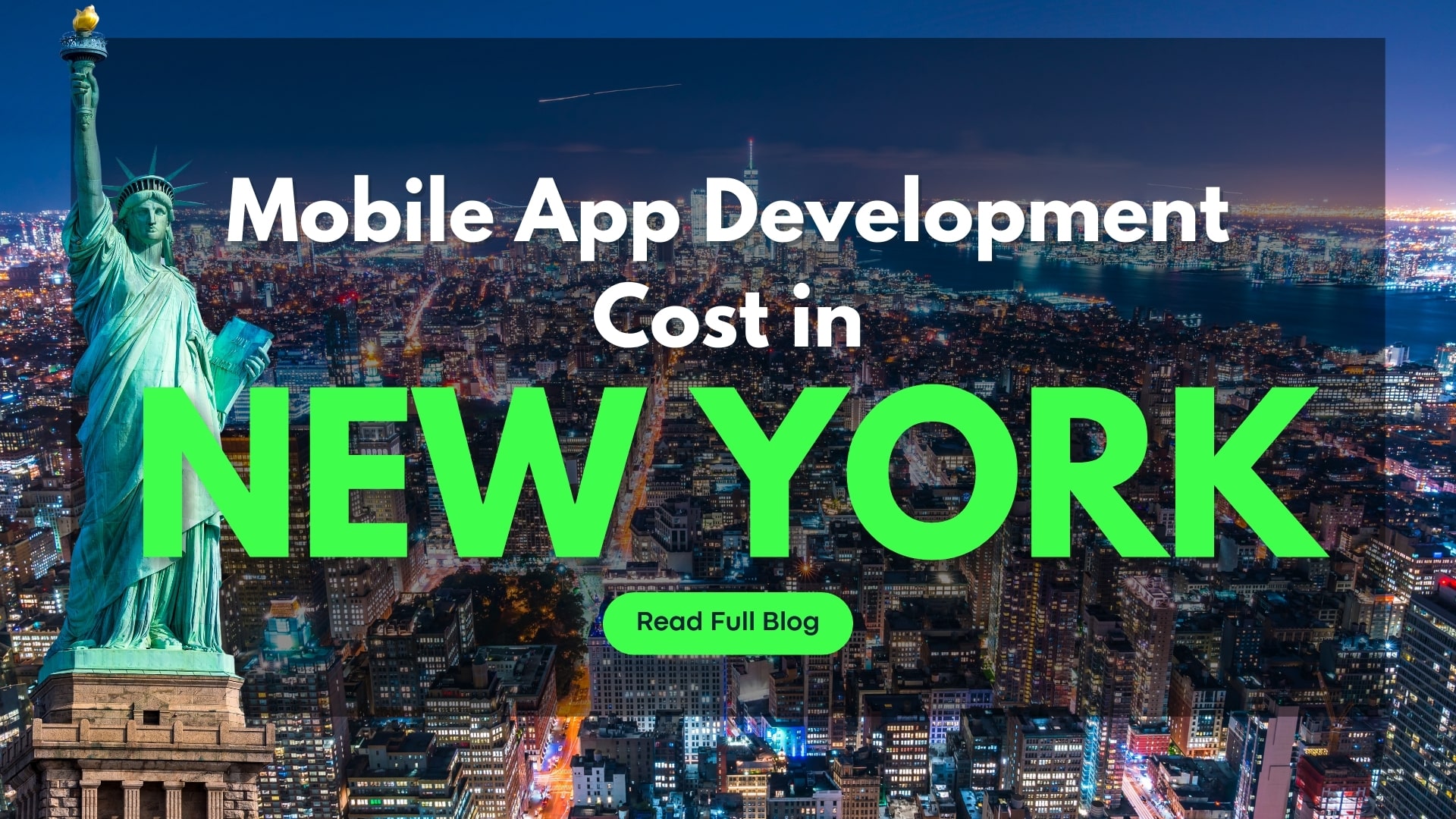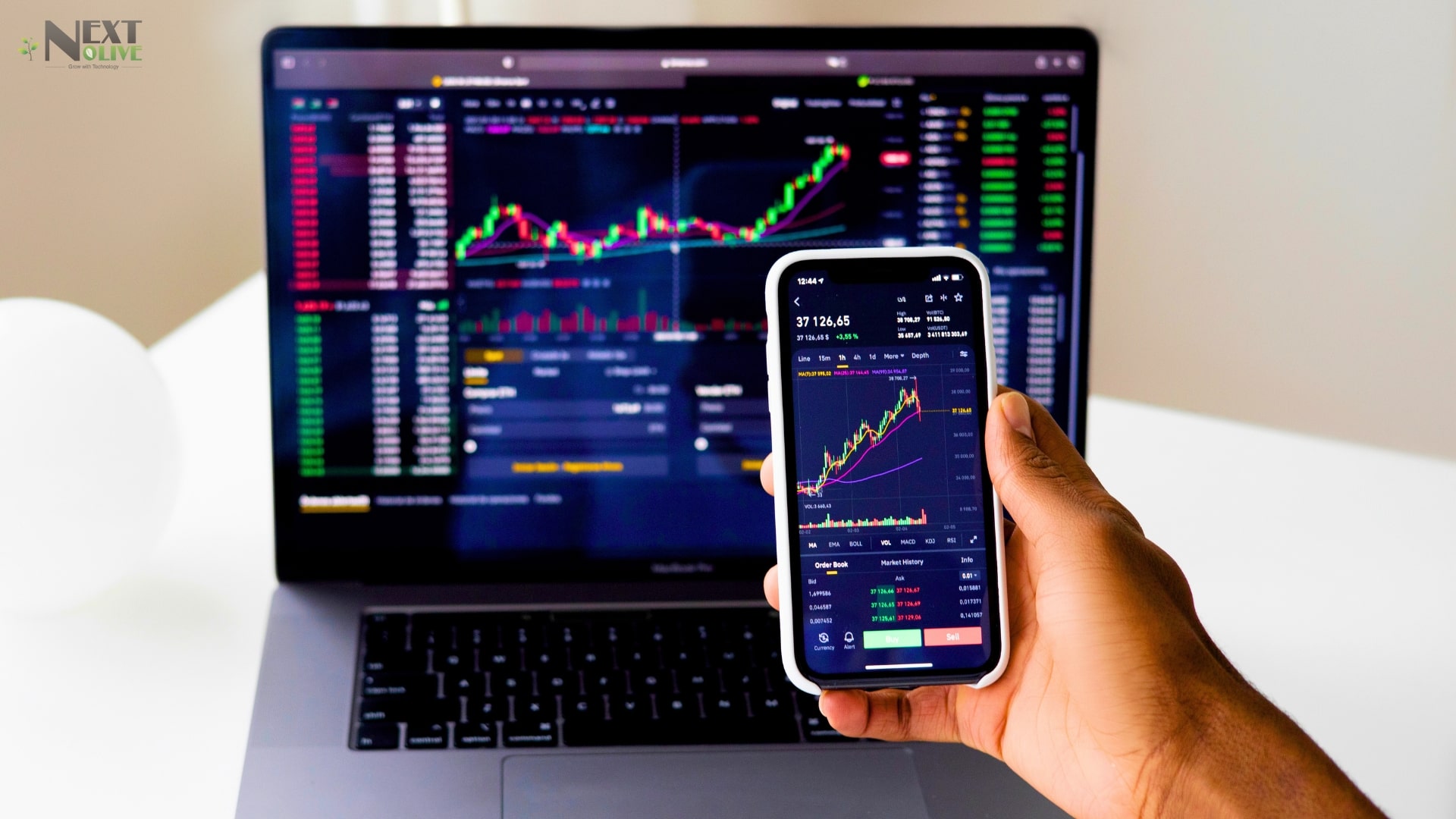How Much Does It Cost to Develop a Food Delivery App?
In the modern world. Market dynamics are changing. Many businesses are offering their products and services through online platforms such as websites and mobile apps. Many companies have started their food delivery business in the food and restaurant sector to provide fresh food at the customer’s doorstep. Whether it is a large hotel or a restaurant, a small outlet, or a roadside food stall, many of them are offering food delivery services. This has opened lots of opportunities for many businesses to start their food delivery services. If you are a startup or an established business looking to get into the food delivery business in 2025, the main question that comes to mind is What is the food delivery app development cost. This comprehensive guide aims to answer all your questions. Let’s get started!
Table of Contents
ToggleGlobal Market Statistics of Food Delivery Apps in 2025
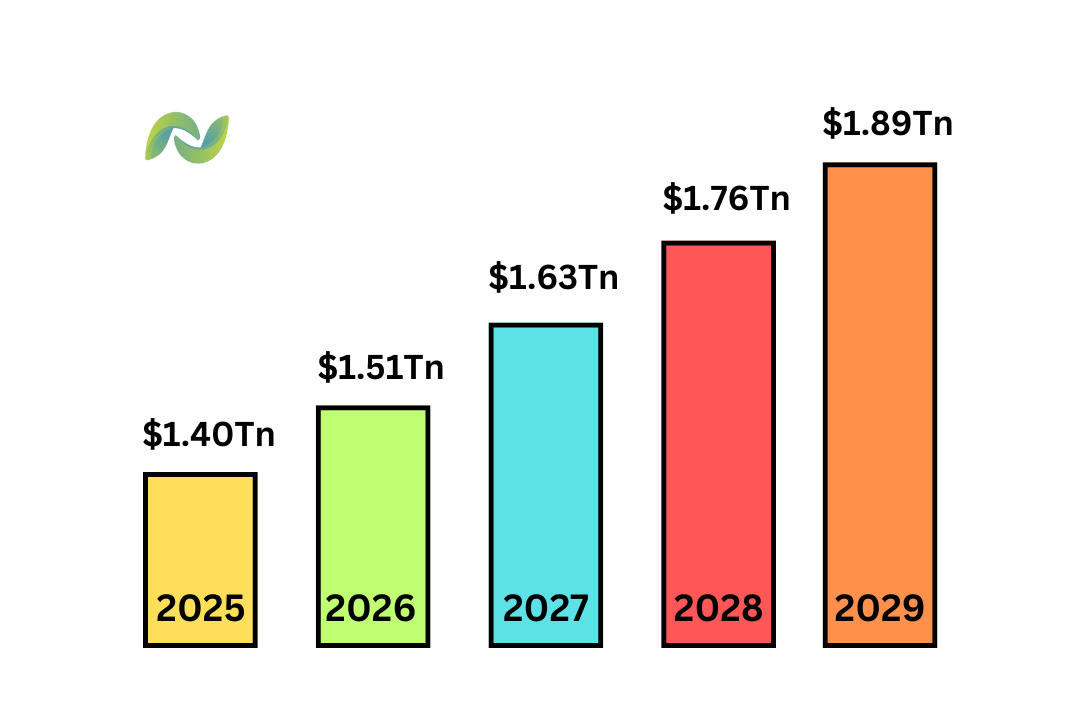
According to a report by Statista, the global market revenue of food delivery applications is expected to be $1.40 trillion in 2025. With a CAGR of 7.93%, the market cap would reach $1.89 trillion in 2029.
Various Types of Food Delivery Apps With Their Costs
[1] Restaurant-Specific Apps
As the name suggests, restaurant-specific apps are custom-built for specific restaurants and serve exclusively to their customers. These also include small outlets. For example, Domino’s and Pizza Hut. Key features include menu browsing, real-time order tracking, exclusive offers, and discounts etc. The cost of developing such apps lies between $20,000 to $110,000.
[2] Aggregator Apps
Aggregator applications allow the restaurants and food outlets to list themselves on the platform, but handle the delivery by themselves. In simple words, aggregator apps do not handle the logistics and delivery of the restaurant; rather, they offer a platform to them. Features include a restaurant listing with reviews/ratings, search filters, payment gateway integration, etc. The cost of development ranges from $30,000 to $120,00 or more.
[3] Logistics-Focused Apps (Delivery as a Service)
These are some of the most widely used food delivery applications. These apps handle both the restaurant listings and delivery logistics themselves. For example, Swiggy and Zomato. There are many features in these apps, such as real-time GPS tracking for both customer and delivery partner, multiple payment options, an AI Chatbot assistant, etc. The cost of developing DaaS apps lies between $50,000 to $250,000.
[4] Hyperlocal Delivery Apps
These food delivery applications are designed to serve a specific region or locality. For example, Dunzo. The features include multi-category delivery, such as food, grocery, etc., integration with local vendors, etc. The cost of development is between $40,000 to $150,000.
[5] Meal Kit Delivery Apps
Meal kit delivery apps provide the delivery of food kits. The food kits have pre-proportioned ingredients of a specific food that people can buy to cook at home. Some of the features include subscription management, recipe tutorials in text or video form, customizable meal kits, etc. The cost lies between $30,000 to $120,000.
[6] Cloud Kitchen Apps
Cloud kitchens are increasingly popular nowadays. These types of restaurants do not have dine-in facilities and deliver food through dedicated apps. Features include menu management for multiple brands, integration with third-party delivery services, and real-time order tracking. The cost of developing these kinds of apps ranges between $20,000 to $100,000.
Factors That Affect Food Delivery App Development Cost in 2025
[1] App Complexity and Features
The features and complexity of the app play a crucial role in the development costs of food delivery apps. Basic features are generally less complex to develop and implement, but advanced features such as AI and ML are more complex to develop and implement, thus it can increase the overall development costs.
[2] Platform
The choice of platform also impacts the cost to develop a food delivery app. Developing native apps for Android and iOS would provide much better integration, performance, and platform compatibility, but they tend to have higher development costs. You can opt for cross-platform app development as it will reduce the overall costs.
[3] UI/UX Design Complexity
UI/UX is the major factor in driving and acquiring customers for your food delivery app. A simple UI/UX would be good for restaurant-specific app of a small outlet and would cost less to design and implement, but if you have a large restaurant with multiple branches or you are a business seeking to venture into the food delivery business, it is highly recommended to have better UI/UX for your app. It would cost more, but the result would be exceptional.
[4] Third-Party Integrations
Third-party integrations such as payment gateways, map services, or any other API require a subscription and licensing fee, which add up to the overall costs but add more features and functionalities to the app. Also, if the API is complex, it would require additional expertise to integrate it, further increasing the cost.
[5] Development Team Location
The development team size and location also matter in deciding the overall food delivery development costs. If the team size is large, the development and deployment of the application would be faster, but it will increase the expense. If the team size is small, the cost will be less, but the development time will be much longer, depending on several factors such as type, size, and complexity of the app. An offshore team would have higher hiring costs than the local team. You can also outsource your project to a food delivery app development company.
[6] Maintenance and Updates
Maintenance and updates are necessary to keep the food delivery app running for a long time. Developing new updates and modules to increase the features and functionalities of the mobile application. Also, bugs and errors related to performance or UI/UX occur, which can ruin the overall user experience. All these things need to be fixed regularly and thus require additional investment.
[7] Security
Security of the application and protecting the user data and privacy is very crucial in the digital age. Implementing end-to-end encryption and security features, as well as compliance with data protection regulations such as HIPAA, GDPR, etc increases the overall cost to develop a delivery app.
Common Features of Food Delivery Apps With Cost to Implement
[1] User-Friendly Interface: $5,000 to $15,000
[2] Advanced Filter and Search: $2,000 to $10,000
[3] Real-time GPS Tracking: $8,000 to $25,000
[4] Multiple Secure Payment Options: $5,000 to $15,000
[5] Push Notifications: $1,000 to $5,000
[6] Reviews and Ratings: $2,000 to $7,000
[7] AI-powered Chatbot: $5,000 to $30,000
[8] Discounts and Loyalty Programs: $3,000 to $12,000
[9] Multi-Language Support: $2,000 to $10,000
Major Panels of Food Delivery Applications

[1] Customer Side Panel or Interface
The customer side panel is one of the major parts of a food delivery application. It consists of the following features:
Restaurant Search: Users can search restaurants in any region or place.
Menu Browsing and Placing Order: Browse the menu of the restaurant and place an order.
Order Tracking: Check the real-time status of the order delivery.
Ratings and Reviews: Check the ratings of foods and restaurants, and even give ratings and reviews.
Order History and Favorites: Check order history and set specific dishes or restaurants of your choice as favorites.
Push Notifications: Push notifications allow the user to never miss an update of the latest deals or order status.
AI Chatbot Assistant: Users can ask questions regarding their issues and queries.
Multiple Payment Options: Users can choose from different payment options such as cash, card, or any other mode.
Customer Support: Users can call the customer support to get their queries and issues solved.
Profile Management: Users can customize and manage their profiles as they like.
[2] Restaurant Side Panel or Interface
The restaurant side panel helps the restaurant ownevr and management by utilizing the following features such as:
Order Management: Restaurants can easily view and manage their orders.
Partner Management: Easily manage restaurant partners and branches.
Delivery Partner Communications: Manage and communicate with the delivery partner.
Delivery Fee Management: Set the delivery fee of each order based on location and other factors.
Menu Management: Manage the menu of the restaurant.
Payment Tracking and Settlement: Track and manage the payment of orders.
Revenue and Analytics Dashboard: Get insights into the revenue and profit through advanced analytics and a dashboard.
Order History: See the order history of the users and send them personalized promotions and offers.
Staff Management: Manage the staff-related tasks such as attendance and salary.
Multiple Language Support: Multiple language support enables the restaurant to communicate with its staff and customers from different regions.
[3] Delivery Partner Side Panel or Interface
This panel helps the delivery drivers in many ways using many features such as:
Order Assignment: Riders can check their assigned orders.
Order Details and Instructions: Check the details of the order and delivery location, as well as the mode of payment.
Turn-by-Turn Navigation: Offer turn-by-turn real-time navigation for finding the delivery location easily.
Earnings Tracking: Riders can check their earning and maintain a record for that.
Delivery History: Get details on the past deliveries.
Availability Settings: Toggle on or off to tell the restaurant whether they are available for delivery or not at a given time.
Follow a Step-by-Step Approach For Food Delivery App Development

Stage 1: Market Research and Planning
This is the first stage of the food delivery app development process. Every app idea begins with detailed market research. The market research allows for assessing the competitors, the problems that can be solved using the application, and exploring the market opportunities. Afterwards, the application is planned with requirement gathering and feasibility analysis being the key components of the stage. Cost in this stage is between $600 to $1,200.
Stage 2: Business Model Selection
Now that the requirements are gathered and a robust plan is made, it is time to select the right business model. The selection of the business model depends upon several factors such as the type of app and budget, etc. There are several business models to choose from, such as the aggregator model, cloud kitchen model, delivery model, subscription-based model, etc. The cost in this stage lies between $400 to $1,000.
Stage 3: Feature Designing and Prototyping
Now, the features of the food delivery app are designed using the SRS document. Determine the key features like user authentication and profile creation, search filters, payment gateways, real-time tracking systems, push notifications, etc. Afterwards, design wireframes and create a working prototype that will give the developers and client an idea of how the app will look in the final version. The cost lies between $1,000 to $4,000.
Stage 4: UI/UX Design
The user interface and user experience are fundamental aspects of any mobile app. An engaging and intuitive UI/UX attracts users and increases the potential of the app to be discovered by a wider audience. Ensure responsiveness and faster loading times while designing the UI/UX. Cost is between $1,300 to $4,000.
Stage 5: Mobile App Development
In this stage, the full-scale food delivery app development begins. The application is divided into frontend and backend, and both of them are further divided into various smaller modules to be developed individually by mobile app developers. Apart from the frontend and backend, third-party or custom APIs would be integrated into the app for increased features and functionalities such as payment gateway integration, maps, GPS, and more. The cost of the development stage is between $5,000 to over $20,000.
Stage 6: QA Testing
After the development is completed, the testing phase commences. In this stage, the team of testers performs various tests on the finished application, such as unit testing, integration testing, user acceptance testing, security testing, functional testing, non-functional testing, etc. Also, test for bugs, errors, compatibility, and performance on different devices and conditions. Also, ensure security and legal compliance. The cost is about $1,200 to $2,500.
Stage 7: Launch and Deployment
In this stage, the food delivery app is submitted to the app store for review and approval. Once approved, the app is made available for the general public to use. Extensive marketing is also done to ensure the app reaches a wider audience. The cost estimate in this stage is $600 to $2,500.
Stage 8: Maintenance and Support
This is the last but not the least part of the app development process. In this stage, regular updates that offer new features and functionalities are provided in the food delivery mobile app to increase its overall functionalities, refine user experience, and ensure the app remains highly competitive with the latest market trends. The maintenance cost is $700 to $3,000 per year.
Tech Stack to Use in Food Delivery App Development
[1] Frontend: Java, Swift, Kotlin, Objective-C, Flutter, React Native, Dart, Ionic
[2] Backend: Java, Python, Node.js, Django, Ruby on Rails
[3] Web Servers: Apache, Nginx
[4] API: REST, GraphQL, SOAP
[5] Database: MySQL, PostgreSQL, MongoDB, Cassandra
[6] Mapping API: Mapbox, Google Maps Platform, Apple Maps
[7] Geolocation Services: Core Location for iOS, Location Services for Android
[8] Payment Gateway API: PayPal, Stripe, Razorpay
[9] Cloud: AWS, Azure, GCP
[10] Analytics: Google Analytics, Firebase Analytics, Crashlytics
Monetization Strategies for Food Delivery Apps
[1] Delivery Fees
Charging the customer for the food delivery is one of the most straightforward ways of generating revenue. However, the fee must be based on factors such as location, order size, etc.
[2] Restaurant Commission
Apps can charge commission or fees from restaurants for every order that is placed through the app. It is generally 10% to 30% of the order total.
[3] Subscription Plans
Subscription services, such as unlimited free deliveries or exclusive discounts, are another way of generating income. It could be monthly, half-yearly, or yearly subscription plans.
[4] Peak Pricing
Food delivery apps can charge additional fees during peak times, such as lunch or weekends. This also helps manage the demands effectively during the surge period.
[5] Advertisement and Promotions
Apps can run ads or promote other products or brands on their platform in exchange for money.
[6] In-App Purchases
Apps can offer add-ons, such as extra dips, beverages, or desserts, during the ordering process. These small items can add up to the profit.
[7] Partnership with Local Stores
Partnering with local businesses will open up new revenue channels while meeting customer needs.
[8] Delivery Membership for Businesses
Apps can offer exclusive membership to corporates and small offices for bulk orders, which in turn will add up to the overall revenue.
Tips to Optimize the Cost of Developing Food Delivery App
[1] Prioritize Essential Features
Focus on must-have features such as order placement, delivery tracking, and payment options, etc.
[2] Select the Right Tech Stack
Use scalable, reliable, and cost-effective technologies. Use open-source frameworks and tools can save licensing costs.
[3] Leverage Cross-Platform Development
Cross-platfrom development saves a lot of time and resources because a single codebase is used to develop app for both iOS and Android.
[4] Utilize Third-Party Services
Integrate third-party APIs for payment processing, mapping, and notifications rather than building these functionalities from scratch. This will save a lot of time and resources.
[5] Plan for Scalability
Ensure the app is developed while keeping it highly scalable for future upgrades without tearing down the app for minor changes by using modular architecture.
[6] Use Cloud-Based Solutions
Cloud solutions come with subscription plans of different prices. Choose the plan that best suits your business goals and budget.
How Next Olive Can Help You in Developing Your Food Delivery App?
Next Olive is the leading food delivery app development company with over 13 years of experience in food delivery app development and has over 200 mobile app developers. The company offers its food delivery app development services in over 20 countries, such as the USA, UK, Malaysia, Saudi Arabia, South Korea, etc. Next Olive is known for its customer-centric development approach and for delivering the project on time, along with cost-effective solutions. Contact Next Olive Technologies for your next project!
Conclusion
In conclusion, the food delivery app development cost depends upon several factors such as the type, size, business model, and many more. The food delivery app industry is flourishing and will continue to grow. We also discussed various factors that affect the food delivery app development costs and how you can lower the costs with simple steps. We also saw different types of apps and their development cost estimate.
Frequently asked questions (FAQs)
The cost of developing different food delivery apps depends on several factors such as size, type, complexity, etc.
Grocery Delivery App Development Cost: $5,000 to $80,000
Pizza Delivery App Development Cost: $6,000 to $50,000
On-Demand Delivery App Development Cost: $8,000 to $65,000
The time taken for creating a food delivery app depends upon factors such as platform, type, complexity, etc. Generally, it takes between 2 to 3 months for a basic app, 4 to 7 months for a medium-sized app, and 7 to over 12 months for a highly complex application.
For a small-sized business, SaaS-based CRM software is generally more affordable due to its subscription-based nature and various pricing models that might suit your business.

